The use of RFID inlays in baggage labels could help promote successful global deployment.
In an effort to handle baggage while traveling properly, at this year’s Annual General Meeting in June, IATA decided to support the global deployment of UHF RFID technology to ensure seamless baggage tracking by 2023. This decision is based on the 2018 IATA Resolution 754 defining the tracking of bags during the journey, as well as the sharing of information between airlines and interline journey partners. Mainly using bar codes at the moment, airlines, airports and ground handlers are called upon in a resolution to roll out RFID bag tracking as quickly as possible.
There is movement in the matter: The use of RFID technology in baggage tracking is back on the agenda. Why now? To save mishandling costs, offer new services, optimize end-to-end baggage handling
According to SITA, only 5.57 pieces of baggage per 1,000 passengers are lost – a decrease of more than 70% since 2007. Nevertheless, the costs remain in excess of $2 billion. As passenger numbers continue to rise (expected doubling to over eight billion in 2037), these costs, as well as the number of lost baggage items, must be further reduced. Airlines intend to offer their customers new services such as self-service bag tagging, drop-off at bag-drop stations before reaching the airport, and real-time bag tracking throughout the journey. And airports, represented by ACI World, are interested in better analyzing weak points in baggage handling in order to further optimize processes and procedures.
Here are a number of reasons why RFID is an ideal choice for this:
RAIN – Improved technology, lower tags costs, successful global rollouts
The idea of using RFID tags for baggage tracking has been around for a long time. Global companies, such as Siemens, investigated the technical feasibility 10 years ago. However, RFID tracking was not implemented due to high costs of $1.50 per tag and standardization issues. Since then, technology and costs have improved. Low-cost RFID tags can be processed in a variety of materials, easier to write on and more efficient and secure to read. In 2016, the IATA expected just $0.1 per bag-tag with a resulting cost saving of $0.2 per passenger. IATA members are also no longer afraid of a global rollout. Other industries (automotive, garment, food etc.) have proven that such projects are viable.
more…
Source: Smart Technology Poised To Change Airport Travel – Label and Narrow Web
